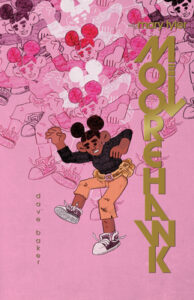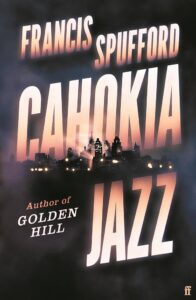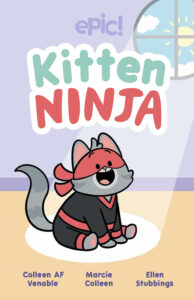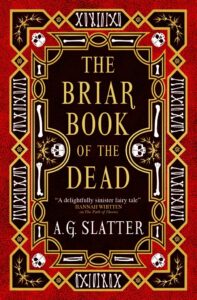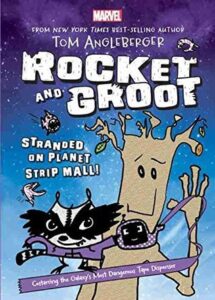This is one of those delightful graphic novels that plonks you into the action in media res, then skillfully unfolds a ton of world-building around you. Aimed at a middle grade audience, this is a terrific way to introduce that plot device to young readers, while immersing them in a wholly original fantasy world.
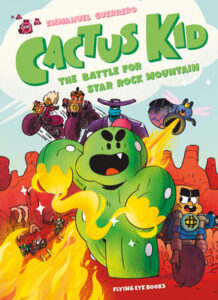 Cactus Kid isn’t really a kid, but definitely looks (and acts) like he’s on the younger side. He’s certainly old enough to have felt real heartbreak, which perhaps fuels his somewhat megalomaniacal quest to become the greatest wizard in the world. To that end, he’s acquired a book of magical recipes, and rides his motorbike across the Neverending Desert in pursuit of the exotic ingredients that will help him master, first, fire spells and then who knows what else. And perhaps once he’s proven himself as the greatest wizard in the world, his dad will respect him and the mysterious Ruby will allow him to join her in fighting crime back in their hometown of Florencia.
Cactus Kid isn’t really a kid, but definitely looks (and acts) like he’s on the younger side. He’s certainly old enough to have felt real heartbreak, which perhaps fuels his somewhat megalomaniacal quest to become the greatest wizard in the world. To that end, he’s acquired a book of magical recipes, and rides his motorbike across the Neverending Desert in pursuit of the exotic ingredients that will help him master, first, fire spells and then who knows what else. And perhaps once he’s proven himself as the greatest wizard in the world, his dad will respect him and the mysterious Ruby will allow him to join her in fighting crime back in their hometown of Florencia.
But for now, he’s in search of Star Rock, a powerful ingredient that will level up his fire potion mastery. He thinks he’ll be able to find some at the mountain named after it, so is dismayed to find the area virtually strip mined and definitely empty of any of the valuable substance. While there, he’s accosted by two rival motorcycle gangs, the Shells and the Clams. An accident causes an explosion, and Cactus Kid barely makes it out on the back of the bike driven by Freddy, leader of the Clams.

